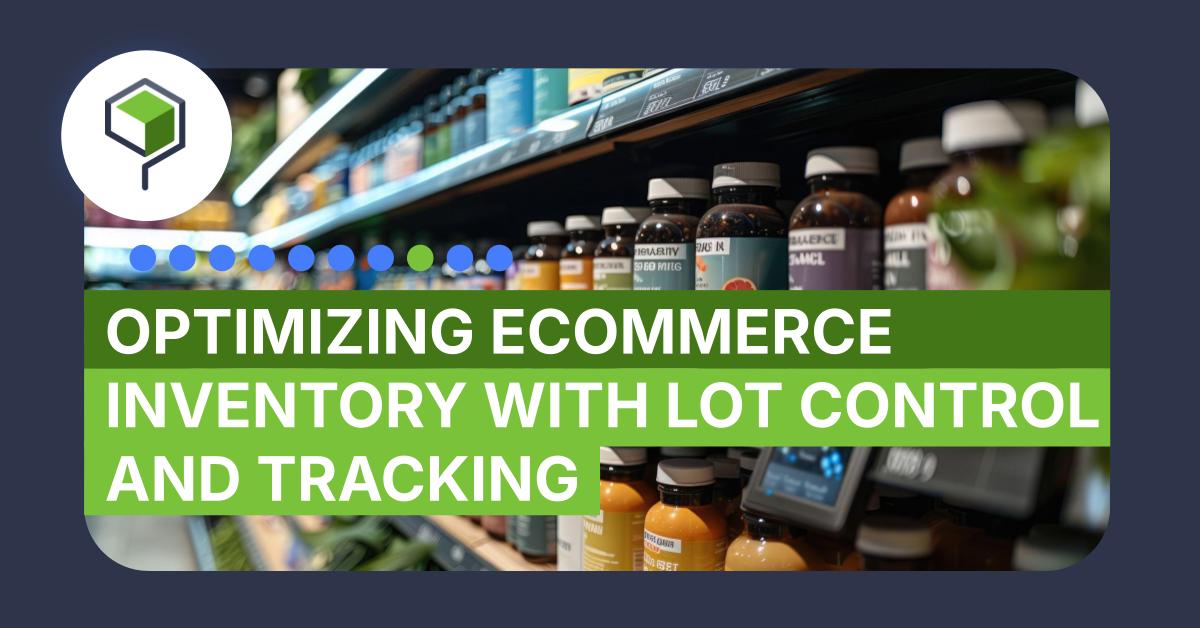How to Take Your Ecommerce Brand to the Next Level

If you own an ecommerce business, congratulations! You’ve made it through sleepless nights and never-ending days to get your products into the arms of loving consumers. You hold a piece of the American dream, and your brand is a testament to hard work all that’s possible because of it.
As an entrepreneur, sheer will and determination keep you focused on future success, but there’s more involved when taking your ecommerce brand to the next level.
The following can serve as a guideline to expand your business and sustain that growth, while overcoming challenges along the way.
Optimize Your Business Plan
The first step taken before launching your website was creating your business plan—a monumental task no doubt. But with all the responsibilities in running an online store, it’s easy to let the business plan fall to the wayside.
Step one of leveling up your ecommerce business? Take some time to brush off the dust from your business plan’s cover, wink-wink, and give it a thorough review. You may find where decisions made deviated from the action steps you planned for, and how those adjustments paid off.
Take a second look at your mission and vision to validate company culture and whether strategic partners are in sync with who you are and what you stand for. Checking out your first business plan is also a great way to revisit humble beginnings and see how far you’ve come.
Change happens fast and often without warning—business, right? With that in mind, scheduling regular assessments of your plan helps you stay on course, adjust when needed, manage operations, and watch finances. Some companies update business plans every 90 days, while others plan for it yearly. Depending on your brand’s seasonal shifts and anticipated growth, you can decide on the frequency.
Specific areas to be mindful of include:
- product offerings, marketing campaigns, sales enablement strategies
- historical data and real-time analysis of buyer profiles, social engagement, web traffic and page abandons, and how and when conversions happen
- necessary legal and regulatory updates
- expenditures, costs, expenses, and ROI
Once you get past the business plan review, it’s time to bring new perspectives to your ecommerce brand.
See Your Brand Through Fresh Eyes
Now that you’ve had a chance to review your business analysis, you can measure what worked and what needs improvement. By comparing business goals to actual achievements, you’ll know if targeted audiences converted to customer purchases, and how to reposition your brand. Moving forward begins with a unique vantage point.
Rediscover Your Why
Remember when you first had the idea to open your ecommerce business? From those early days, there was a reason you pursued your dream. Maybe it was to solve a problem, fulfill a goal of entrepreneurship, build a family legacy, or maybe it was for financial gain.
Take the founders of Intentional Foods, for example. They each had thriving culinary careers of their own but gave up everything to start an online/instore allergen-free foods company in support of their young daughter who suffers from multiple health issues.
Whatever inspired you to start your ecommerce dream, grasp it again. This is your why and it’s there to help lift you up when times get tough, and pull you through to the next level, and the next.
Boost Your Brand Story
Over time, even the most iconic brands can lose their public luster, and it may not have anything to do with their products. If your online business initially found success by telling a unique brand story, maybe it’s time for a refresh.
But before you start digging in the weeds, realize how your business fits into the bigger picture. Are there industry associations, online networking groups, and charities your brand can impact? And how well does your brand story resonate with them? Are there opportunities there you haven’t thought of?
Embrace your why and think about telling that story differently to reign in relatability for all your customers. If your products serve a wide range of audiences, you could come up with brand micro-stories that pair well with each.
For a bigger splash, you could give your branding an updo. A subtle refreshed look is an ideal opportunity to enhance the buyer journey, shedding new light on your why and featured products, while increasing brand loyalty. Bring it!
Sites with Substance Sell
Your website is everything. Ever wonder if you’re maximizing its capacity? Hint: there’s lots of ways to do it. Your website provides customers with information about who you are, what you have, and how they can get it. But there’s more to your website than fundamentals.
To expand your ecommerce horizons, it’s important to use all a website has to offer. From the date you pushed your site live until now, a lot has changed. Driving traffic to your website was a primary goal. But now that there’s experience under your belt, it’s time to take the gloves off, get your hands dirty, and discover how to direct traffic to where you want it to go.
The front end.
Consumers appreciate a stress-free online user experience. As the digital shopping experience evolves, so does web design and functionality. Site visits wrought with glitches, slow loading times, outdated information, and static imagery may not keep brand enthusiasts’ attention, especially when a quick search and click redirects them to those same products available elsewhere.
The back end.
Sometimes a wonky user experience is rooted in the other side of the website: the back end. Overloaded servers, antiquated tech systems, and unmanaged databases weigh down the efficiency they were meant to create. What’s more, without the necessary updates to software toolkits, both website and its users are vulnerable to cybersecurity threats and intrusions.
Upskill the customer experience.
By working with a web developer, website designer, and content strategist, your online presence can stay fresh, relevant, and optimized.
Ideally, front and back ends complement one another in real-time, while technologies integrate seamless, dynamic visual experiences driving shopping cart visits and sales. And by scheduling regular site updates and data monitoring, you’ll know what products are gaining interest, when to give them more props, and promote cross-sells.
On point or on blast.
Influencers have a hold on swaying customer preferences; however, not all ecommerce companies have the luxury of hiring a brand advocate. That’s the beauty of social media channels and the exposure they bring—it’s available to anyone with a voice and the desire to express it.
Online organic engagement can blow up your brand or break it. As your ecommerce brand gains popularity, your social channels can take off… like a runaway freight train.
To ensure your brand remains top of mind and reputationally on point, dedicate someone (or a team) to monitor your Instagram, Meta, X, LinkedIn, and Reddit posts and feeds. Freedom of speech is real, but negative talk is so… Nancy.
Next Level Ecommerce Needs Next Level Efficiency
You’ve combed every inch of your brand and brushed through marketing opportunities. What’s left? Finding ways to increase productivity, efficiency, and redefine your brand’s key differentiators.
Let Automation Do the Work
Whether your business is strictly ecommerce or expands into omnichannel, your order fulfillment cycle time can be your pain point or golden ticket. And for every step in the process, from shopping cart to end-delivery, there are potential gaps in search of solutions.
By working with an order fulfillment provider specializing in ecommerce, business owners can focus more on building new business and expanding product lines, instead of sweating operational details. Integrating automated technologies into your online platforms boosts ecommerce into next-level strategies, because of the results they bring.
ShippingTree customers know the benefits automation brings to their operations, positively impacting their strategic partners too. How? When technologies work together, shopping carts talk to customer orders and subscriptions, and EDI speak supply chain and Shopify, and product returns easily find their way home.
Inventory management systems (IMS) and warehouse management systems (WMS) bring fulfillment and logistics together, so you have full visibility into inventory levels, product lot and batch statuses, and transit timelines. And if there’s a delay somewhere along the way, you’ll receive a notification and recommended workarounds, so you can keep orders moving and customers happy.
Research Like the Entrepreneur You Are
Now that you’ve turned your business and marketing plans upside down, inside out, and backwards, there’s two more areas to give attention to, your competitors and strategic partnerships.
Until you take a hard look at where you stand compared to your competition, determining what’s next may prompt more questions than answers.
Enter the SWOT analysis.
Start by identifying top competitors to your ecommerce business and add them to a . SWOT stands for strengths, weaknesses, opportunities, and threats—ideal characteristics to gage your business and how it stacks up to your competitors.
Once your SWOT document is complete, it can also be shared with internal departments to get their perspectives and collaborate on what areas of the brand require the greatest focus.
Abandon situationships.
Ask relationship seekers what it takes to find their person and they’ll say, “You have to kiss a lot of frogs first.” The same applies to your ecommerce business—it’s hard to fall in love with suppliers if all they give are breadcrumbs. You and your brand deserve better.
Because B2B and D2C customers count on your products, you want to protect those relationships by working with strategic partners who do the same. But business sizzle can fizzle without the right amount of care.
Strategic relationships call for ongoing evaluation, whether it’s examining pricing or service-level performance. There’s no reason to accept one-sided situationships. Fulfillment partnerships thrive on a two-way street.
Choose a 3PL Provider That Prioritizes Your Brand
In ecommerce, your 3PL partner should be an extension of your team, just as invested in your brand success as you are.
Once you’re ready to level up your ecommerce brand, formulate a realistic timeline with agile and fixed benchmarks to help you work toward goals. One of the first steps?
Schedule time to meet with your current third-party logistics (3PL) partner to fully understand their capabilities (and stay open to what other providers can offer!)
Next-level ecommerce brands require next-level fulfillment experts.



